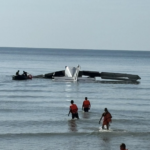The recent seizure of StreamEast and CrackStreams by US Home Land Security with the help of the Alliance for Creativity and Entertainment (ACE) has sent shockwaves through the streaming world. These sites, known for offering free live sports streams, had drawn millions of viewers globally, particularly in North America.
While fans enjoyed bypassing subscription fees, the impact on legitimate broadcasters was staggering. By seizing 138 domains, ACE clarified that piracy isn’t without consequences, marking a major win for content creators and rights holders. But with new domains already surfacing, the battle between anti-piracy groups and illegal streamers is far from over.
Background on Stream East and Cracked Streams
Stream East and Cracked Streams are two names that have dominated the illegal streaming world, particularly for live sports content. These platforms became go-to hubs for fans bypassing expensive subscriptions or geographic restrictions. Initially gaining traction due to their ease of use and free access to premium sports events, their popularity soared to unprecedented levels, especially in North America. But how did these platforms come to be, and who was watching?
The Rise of Illegal Streaming in Vietnam
Vietnam’s fast-growing tech scene brought significant challenges, including illegal streaming operations. The country’s advancements in telecommunications infrastructure and lack of stringent enforcement provided fertile ground for piracy networks. Sites like StreamEast and CrackStreams thrived under the radar, taking advantage of global demand for free streaming.
Low operational costs and minimal regulations in Vietnam enabled these platforms to flourish. Organizers often worked anonymously, using complex systems like proxy servers and encrypted domains to avoid detection. They provided access to live sports and other premium events—content with steep subscription costs elsewhere. While Vietnam hosted these operations, the audience largely consisted of international users, especially from the United States and Canada.
Authorities in Vietnam have increased their efforts to tackle piracy in recent years. High-profile cases set legal precedents, but the problem persisted as operators found new ways to circumvent laws. This environment gave rise to some of the most sophisticated piracy networks in the streaming world.
User Demographics and Traffic Statistics
Stream East and Cracked Streams were not just niche platforms—they attracted millions of users globally. According to recent data, StreamEast amassed over 61.8 million visits per month on just one of its domains. CrackStreams saw similar traffic numbers, with consistent spikes during major sports seasons.
North America dominated the audience base for these sites. Visitors from the US and Canada made up the majority of traffic, drawn by unrestricted access to sports leagues. Demographic data showed that 75% of users were male, with the largest age group falling between 25 and 34. This aligns with the tech-savvy generation, which will most likely seek alternative ways to access premium content.
Interestingly, nearly 70% of users accessed these platforms via mobile devices, highlighting the convenience factor in illegal streaming. These sites gained traction on forums like Reddit and Twitter, where users exchanged links to new domains when old ones were seized. The dynamic traffic growth mirrored the demand for live, unfiltered sports content at no cost.
The Alliance for Creativity and Entertainment (ACE) and law enforcement recognized the massive impact of these operations. Targeting these platforms aimed to curb the growing trend of illegal sports streaming and send a message to piracy operators worldwide.
The Dismantling Operation by ACE
The Alliance for Creativity and Entertainment (ACE) has taken another significant step in its ongoing fight against piracy. This time, the organization targeted a massive operation based in Vietnam, responsible for some of the most infamous illegal sports streaming sites, including Stream East and Cracked Streams. With the help of local law enforcement and global partners, ACE successfully shut down over 138 domains tied to these platforms, disrupting a network that attracted millions of users monthly.
Collaboration with Law Enforcement
The role of Vietnamese law enforcement in this operation was pivotal. Working alongside ACE, local authorities navigated the complexities of identifying and dismantling one of the largest piracy networks in the world. Hanoi police, well-versed in tackling tech-related crimes, played a central role in helping to trace the origins of these sites. Their joint efforts extended beyond simply seizing domain names—they also identified the individuals operating behind the scenes.
This collaboration highlights a growing trend of international cooperation in addressing digital piracy. By pooling resources and expertise, ACE and Vietnamese authorities showcased how global partnerships can produce significant outcomes. The operation didn’t just shut down websites—it sent a clear message to piracy operators everywhere that even well-hidden networks are not beyond the law’s reach.
Legalities and Consequences of Piracy
The shutdown of Stream East and Cracked Streams has serious legal implications for both the operators and users of these sites. For operators, the consequences are severe. Running a piracy network not only violates copyright laws but often involves additional charges like fraud, identity theft, or money laundering. In Vietnam, depending on the scale of the operation, these can lead to steep fines or lengthy prison sentences.
The risks may seem less direct for users but are just as real. Many assume streaming pirated content is harmless, unaware it’s often illegal. In some jurisdictions, accessing these sites can lead to fines or other legal penalties. Beyond that, there’s the personal risk—piracy sites frequently expose users to malware, phishing scams, and data breaches.
The consequences also ripple out to legitimate broadcasters like DAZN, beIN Sports, and Canal+. These companies invest millions in acquiring broadcasting rights, only to have their content stolen and redistributed. The financial losses undermine their ability to provide quality services and invest in future content. For the average fan, that might mean fewer options and higher costs for legal streaming services.
This operation by ACE and its Vietnamese partners stands as one of the strongest examples of how a united front can challenge piracy’s grip on the entertainment industry. It’s not just about shutting down illegal sites—it’s about preserving the value of creative work and ensuring fair access for all.
Impact on Sports Broadcasting
The shutdown of Stream East and Cracked Streams has highlighted the serious consequences illegal streaming has on legitimate sports broadcasters. These platforms siphoned millions of viewers away from paid services, harming the industry’s financial foundation. The Alliance for Creativity and Entertainment (ACE) operation has not disrupted these sites but has raised important questions about how piracy impacts the broader sports ecosystem.
Financial Losses for Broadcasters
Broadcasters like DAZN, beIN Sports, and Canal+ invest heavily in securing exclusive rights to stream sports events. From football to MMA, these companies allocate millions, if not billions, of dollars to provide high-quality coverage for their audiences. Piracy poses a direct threat to this investment. Each illegally streamed game reduces the value of their rights and cuts into potential revenue.
DAZN’s Chief Operating Officer, Ed McCarthy, recently highlighted piracy’s financial toll on the sports broadcasting landscape. He said, “Piracy undermines the sports ecosystem at all levels.” This sentiment is echoed across the industry. For example, beIN Sports has previously stated that the rise of piracy is a major barrier to their long-term growth, as illegal platforms often redistribute their content without compensation or control.
The time-sensitive nature of live sports makes the problem even worse. Broadcasters rely on real-time engagement to drive advertising revenue and justify subscription fees. When a game is pirated, the financial and operational losses are immediate. For companies like Canal+, this directly affects their ability to reinvest in future content, technology, and fan engagement tools.
Piracy also impacts smaller leagues and teams. Without adequate compensation from legitimate broadcasters, these groups lose vital funding. Over time, this could erode the competitive structures within sports, making it harder for emerging talent to succeed. The ripple effects are evident across the entire industry.
Shift in Viewer Behaviour Post-Takedown
With the streams removed, millions of viewers are now searching for alternatives. Will they turn to legitimate streaming platforms or wait for the next pirate domain to surface? The situation creates an interesting shift in viewer behaviour.
For some, this could be a wake-up call to explore legal options. Platforms like DAZN, which offers over 90,000 live events annually, provide a wide range of sports content at competitive prices. As piracy becomes riskier and less accessible, viewers may opt for convenience and reliability over cost-saving shortcuts. The dismantling of popular illegal platforms could even drive demand for tailored subscription bundles, addressing affordability concerns.
However, others may remain on the lookout for new pirate sites. The “Hydra effect” — where shutting down one operation often leads to multiple new ones springing up — is a common phenomenon in piracy. This could keep illegal streaming alive, albeit in a more fragmented form.
There’s also the potential for viewers to disengage entirely. In a market where multiple streaming subscriptions cost as much as traditional cable, some may feel priced out of legal options. This could pressure broadcasters to rethink pricing strategies or develop more budget-friendly tiers to retain viewership.
Ultimately, the success of services like DAZN and beIN Sports depends on their ability to adapt. Offering value beyond live games—think exclusive documentaries, interactive features, or celebrity watch-along—could make the transition from piracy to legitimate platforms smoother for many fans. By focusing on user experience and affordability, broadcasters may turn this piracy crackdown into an opportunity to redefine their relationship with viewers.
The Role of Consumers in Combating Piracy
The fight against piracy isn’t just the responsibility of organizations like ACE or law enforcement. Viewers play a crucial role in shaping the future of streaming. Every click matters. Users who choose illegal streams support networks that harm legitimate broadcasters, creators, and sports and entertainment ecosystems.
Streaming services have a responsibility to make their platforms more accessible and affordable. However, consumers must also weigh the risks of piracy. Aside from legal consequences, pirated sites are notorious for malware, phishing scams, and credit card breaches.
Fans have the power to support the content they love by subscribing to legal platforms. Some tips to make streaming more budget-friendly include:
- Using bundled services: Many providers offer music, TV, and sports packages.
- Looking for discounts: Platforms like DAZN frequently offer deals for new subscribers or annual memberships.
- Sharing accounts: Many services allow account sharing within households.
Additionally, customers can advocate for changes. Platforms are more likely to adjust pricing models or introduce flexible plans if they feel consumer pressure. Open discussions about affordability could encourage broadcasters to create more inclusive options. After all, the goal shouldn’t just be stopping piracy—it should also include making legitimate streaming a more attractive choice.
By supporting legal streaming avenues, viewers help fund the creation of new content and ensure sustainable growth for their favourite sports, shows, and movies. It’s a small step with a big impact on an industry caught in the crossfire of convenience and ethics.
The Alliance for Creativity and Entertainment (ACE) has decided against piracy with the takedown of Stream East and Cracked Streams. By seizing 138 domains, ACE disrupted a massive network, safeguarding the interests of legitimate broadcasters like DAZN and beIN Sports.
This operation underscores the importance of supporting legal streaming platforms. While piracy may seem convenient, it comes with malware and data breach risks. Choosing licensed services ensures better content and strengthens the sports and entertainment industries.
As the fight against piracy continues, consumers play a key role. Opting for legitimate services creates a sustainable ecosystem for quality content. The future of streaming lies in balancing affordability for fans with fair compensation for broadcasters. The choice starts with the viewer.
Trending News
Cyber Police Crackdown on Call Scam Center Supply Lines

Anna Wong serves as the editor of the Chiang Rai Times, bringing precision and clarity to the publication. Her leadership ensures that the news reaches readers with accuracy and insight. With a keen eye for detail,














